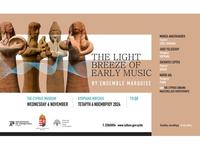Press Releases

21-08-2024 11:33
Announcement by the Department of Antiquities on Makounta-Voules Archaeological Project 2024
The Department of Antiquities of the Deputy Ministry of Culture announces the completion of the study season of the North Carolina State University at Makounta-Voules/Mersinoudia, in Pafos District.
From 6 June to 4 July 2024, the Makounta-Voules Archaeological Project (MVAP) conducted a study season, analysing previously excavated materials. The project was directed by Dr Kathryn Grossman, North Carolina State University, with funding from the US National Science Foundation, and in collaboration with Dr Tate Paulette, North Carolina State University, Dr Lisa Graham, College of Southern Nevada, and Dr Andrew McCarthy, College of Southern Nevada.
An archaeological survey at Makounta-Voules/Mersinoudia in 2017 produced evidence for occupation during the Late Chalcolithic period and Bronze Age. During four subsequent excavation seasons, 2018, 2019, 2022, and 2023, the team uncovered evidence for a series of round buildings dating to the Chalcolithic period, Middle Bronze Age fire installations, and copper mining activities at the site.
The 2024 study provided an opportunity to analyse artifacts and ecofacts recovered from the survey and excavations. The study focused on ground stone tools, chipped stone, ceramics, animal bones, and small finds.
The ceramics from the site are mostly Late Chalcolithic, with some sherds dating to the Middle Chalcolithic and some contexts dating to the Middle Bronze. During the study season, all of the highest priority contexts were analysed, and some vessels that had been found smashed in-situ were reconstructed, including the spouted, hole-mouth vessel shown in Figure 1.

The analysis of ground stone tools revealed an assemblage of tools for cereal processing, e.g., mortars, pestles, rubbers, and woodworking, e.g., axes and adzes. Many ground stone tools had also been reworked by flaking them into new shapes, possibly for entirely new activities, such as mineral extraction.
During this study season, analysis of the animal bones yielded information about ancient foodways and human-animal interaction. With 2800 bone fragments analysed, we know that people at the site were eating mostly deer and pigs, but also sheep, goats, and some fish and birds. They were also using deer antlers and animal bones to make tools, such as the bone point shown in Figure 2.

The analysis of the chipped stone (chert) artifacts revealed an assemblage of scrapers, burins, and sickles. Figure 3 shows a chipped stone tool with “sickle gloss”, the silica residue from cutting plant, probably cereal, stalks.

Work at the site of Makounta-Voules/Mersinoudia is yielding important new information about the Chalcolithic period and the Bronze Age on the island’s northwest coast. The 2024 study season builds on previous work at the site and, at the same time, opens up new questions about social life in prehistoric Cyprus.
(AS/MS)
Relevant Press Releases


04-11-2024 13:18
Announcement by the Cyprus Academy of Sciences, Letters, and Arts





